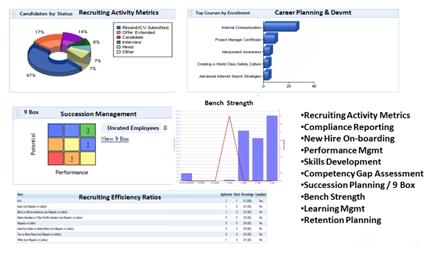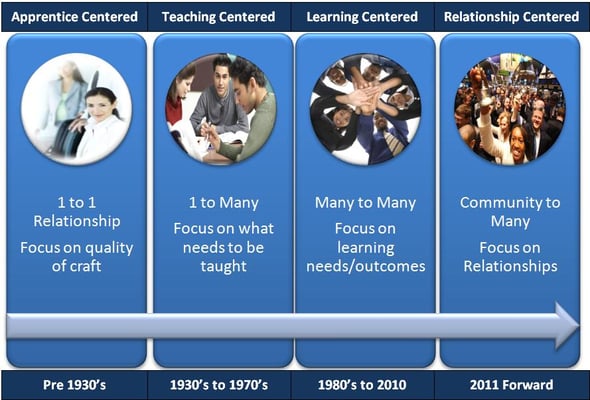Published on
The Age Of Transitional Learning

The coming challenges of redefining work, collaboration and team activities while remaining competitive on a global scale will be large in the “Perfect Storm” we are about to enter. The crushing national debt, anxiety about the global economy and the rise of radical behaviors will add more weight to the heavy lifting ahead. It will make it imperative for everyone to grow.
We will breakthrough long standing business and people management practices in favor of flatter organizations of multicultural and multi-generational virtual teams – some acting autonomously on a 24 hour global clock. Many company silos will come down, discomfort with people differences and workplace bias’ will have to be shed. But isn’t that a good thing? Don’t people work best as a community, team, group to achieve greater success? Keep pace with competitors or fall behind and out.
This WILL BE DIFFICULT for most established sole proprietors, sub chapter S corporations, and small but growing publicly traded companies. It means more trust distributed to folks previously looked upon as “lucky to have a job here and not to be trusted.” It will mean invest in your people, your talent and your future in ways unfamiliar and uncomfortable.
If you have yet to see the film Money Ball, it is worth your time to see it, even if you don’t like Brad Pitt or baseball. Why? Because when all the “A” players are picked clean in the money to match talent game, all of us will be using the same techniques Oakland A’s GM, Billy Beane envisioned to pick winning players – analytics.
Performance statistics only now are being widely accepted in the recruitment and retention of talent. Yes, even raw rookie talent. Continuous lifelong learning will become the new norm, not the exception. Corporate Universities, career development and retention programs based on statistical performance will be the new standard. But first we must make the transition. Like many individual athletes are amazing by themselves, as was Michael Jordan. In basketball Michael could make the difference in the outcome of any round ball game, but on a baseball field counting on your teammates to work together was and is a very different story.
Many new variations of performance analytics tools and dashboards are in the making for both individuals and teams. Some will be adapted. Some will be adopted. Some will really work. The point is that Money Ball analytics has arrived and is growing in the workplace.
These tools and new disciplines can really assist those who have or will adopt a continuous or lifelong approach to learning. Unfortunately, during this transition process, too many will view performance metrics as “big brother”, “management overreach”, or worse and resist the process and the expected outcomes. These work based behaviors of the past will take time to work themselves out of the organization. But as Billy Beane discovered, you can make a 20 game streak winner team with specialists that learn how to use their individual skills to help the whole team win.
Leaders will also need specialized development to learn how to optimize the talent on the field at any given time. Talent will change dynamically by design, by competition and by attrition. Think of it as a casting director for a new movie. Every film process selects its cast of players, writers, sound crew, lighting, cinematographers, etc. The directors and producers are the leaders of a flat organization of specialists for the duration of the film making. When completed, a new film with different teams of selected specialists are brought together, some for the first time. This new team must perform to the same expectations of their last film, as does each team member, or face the prospects that they may not get another call to work.
Another component that is contributing to the movement toward lifelong learning plans is the shifts in learning context and relationships of scale. Much like using LinkedIn or Google when you need information related to your learning cooperated by a friend or colleague. This too will be an adjustment for traditional leaders and managers still struggling with a post WWII command and control organization. As the table below shows, learning shifts with different contexts and relationships.
Without lots of research one can conclude, educators then didn’t see these trends as an issue to press harder for degrees in math and science, though our NASA program still had not peaked in demand for scientists until 2006, there were generally lower standards of admissions to institutions of higher learning and lower standards for high school diplomas.
As the IT revolution rolled on headed for the Internet Revolution, IT certification schools and curriculum sprung up everywhere to support the growth of distributed computing known as server-centric. These activities helped keep pace with specific skills needed to support the desktop computing roll out and PC application training went ballistic. The construction of big iron computing and raised flooring data centers that supported them began a long decline, so skills and training by the private sector shifted to meet demand. Where once was only the University of Phoenix in many locations, now a new crop of private education offerings gave the private sector a false view of skilled worker supply that would not keep pace with demand over the long haul. The unintended consequences still lie ahead.
Author Perspective: Business





